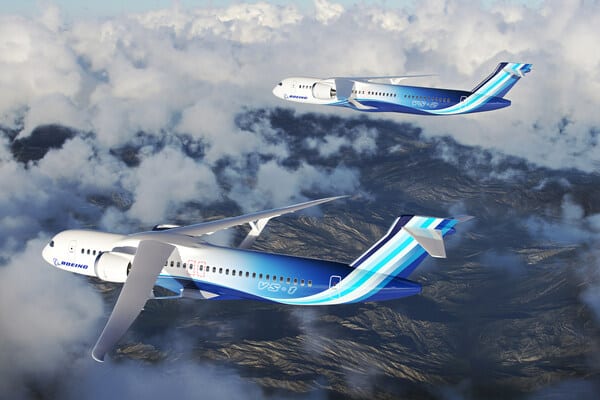Aerospace
NASA may build a new narrow-body Boeing aircraft wing that would cut emissions by 30%.

Boeing [NYSE: BA] and its industry team have been chosen by NASA to oversee the creation and testing of a full-scale Transonic Truss-Braced Wing (TTBW) demonstrator aircraft.
Future designs will be influenced by the technology shown off and put to the test as part of the Sustainable Flight Demonstrator (SFD) initiative, which may result in ground-breaking aerodynamic and fuel efficiency improvements.
Depending on the mission, a single-aisle airplane with a TTBW layout could, when coupled with anticipated improvements in propulsion systems, materials, and systems architecture, cut fuel consumption and emissions by up to 30%. The SFD program aims to promote both the objectives outlined in the White House’s U.S. Aviation Strategy and the civil aviation industry’s commitment to achieving net zero carbon emissions by 2050.

NASA has selected Boeing and its industry team to lead the development and flight testing of a full-scale Transonic Truss-Braced Wing (TTBW) demonstrator airplane.
Greg Hyslop, chief engineer and executive vice president of Engineering, Test & Technology of Boeing, stated that the SFD program “has the potential to make a significant contribution toward a sustainable future.” It offers the chance to create, construct, and test-fly a full-scale experimental plane while tackling brand-new technical issues.
Advanced propulsion systems, which are now constrained by a lack of underwing space in today’s low-wing airplane layouts, could potentially be accommodated by ultrathin wings braced by struts with bigger spans and higher aspect ratios. Boeing will combine brand-new components with existing car parts to create the prototype vehicle.
NASA’s funding through the SFD Space Act Agreement totals $425 million. The SFD program will also leverage up to $725 million in funding from Boeing and its industry partners to shape the demonstrator program and meet the resource needs required. Separately, Boeing’s previous internal investments for recent phases of sustainable aviation research total $110 million.
The TTBW airframe concept is the result of more than a decade of development supported by NASA, Boeing, and industry investments. Under previous NASA programs including the agency’s Subsonic Ultra Green Aircraft Research program, Boeing conducted extensive wind tunnel testing and digital modeling to advance the design of the TTBW. Early conceptual studies started under NASA’s Environmentally Responsible Aviation program.

Aerospace
When Ratan Tata was denied entry to the airfield at the Aero India show, he waited

During our visit to Aero India 2019, we had the unexpected opportunity to see Ratan Tata at the event, which was a thrilling moment for us. However, there was a surprising hiccup when the security staff didn’t allow him to enter due to a lack of a security pass.
Despite this, he remained calm and patiently waited for about 20 minutes until a member of the Tata team brought him the required pass, after which he calmly proceeded inside. It was a humbling sight, showcasing his composed demeanor even in such situations.
Ratan Tata ji is not only a renowned industrialist but also a trained pilot, holding a pilot’s license. In 2007, he became the first Indian civilian to fly the F-16 Falcon during the Aero India show in Bangalore—a proud moment for the nation.
His passion for aviation extended beyond flying, as he played a key role in shaping India’s aerospace industry. Under his leadership, Tata ventured into manufacturing and maintaining aerospace components while upholding its legacy of quality. Notably, Tata’s collaboration with Airbus to develop and manufacture the C295 aircraft is a testament to its growing influence in the sector.
-

 Aviation2 months ago
Aviation2 months agoBoeing confirms 797: A New Era for Mid-Size Aircraft
-

 Aviation2 months ago
Aviation2 months agoMicrosoft Flight Simulator Raises $3 Million to Bring Back the An-225 Mriya
-

 Aviation2 months ago
Aviation2 months agoLockheed and Tata Team Up to Build C-130J MRO Facility in India
-

 Airlines2 months ago
Airlines2 months agoQantas Engineers Stage Walkout Over Cost of Living Concerns
-

 Airlines2 months ago
Airlines2 months agoQatar Citizens Can Travel to the United States Without a Visa
-

 Aviation2 months ago
Aviation2 months agoBoeing Offers 25% Pay Increase & Promise to Build Next Plane in Seattle
-

 Aviation2 months ago
Aviation2 months agoQatar Airways bans these new Electronic Devices on plane
-

 Airlines2 months ago
Airlines2 months agoEmirates Ends 28-Year Singapore-Melbourne Fifth Freedom Route








